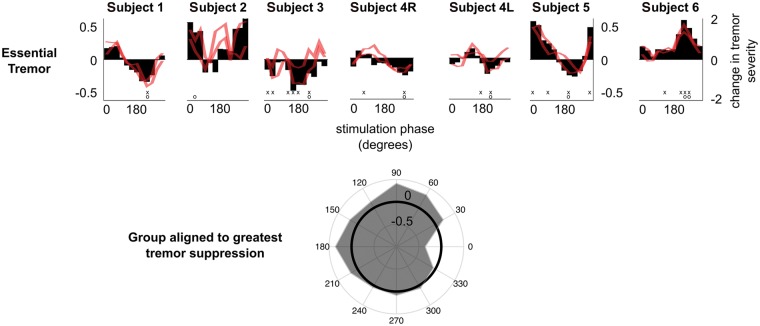Figure 2.
Tremor amplitude can be consistently modulated with phase-specific thalamic stimulation in essential tremor patients. Black bars indicate the median amplitude change at each stimulation phase at the dominant tremor axis, while the red lines show the median amplitude change at the other two tremor axes which were not phase-tracked to control stimulation. Tremor severity is normalized such that −1 indicates complete tremor suppression, 0 indicates no change in tremor severity and a positive number indicates tremor amplification. Note that, for presentation purposes, median stimulation phase-amplitude relationships have been smoothed using a moving average filter with a span of three stimulation phases. However, all ranges presented in the main text and statistical analyses, involved data prior to smoothing. ‘x’ indicates stimulation phases that gave rise to a significant modulation in tremor severity with respect to the no stimulation condition while ‘o’ indicates the stimulation phase that gave rise to the most consistent change in tremor amplitude across all trials. Significance was tested with respect to the surrogate distribution derived from the no stimulation condition, and corrected for 12 effective comparisons using Bonferroni correction. Bottom: The average phase-amplitude relationship across essential tremor patients (and both sides in the case of Subject 4) realigned such that 0° would correspond to the stimulation phase that gave rise to the greatest tremor suppression. At the group level, there was a main effect of stimulation phase on tremor severity (Friedman’s test P = 0.0026).

